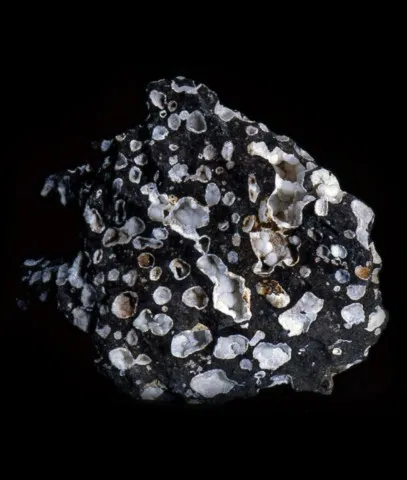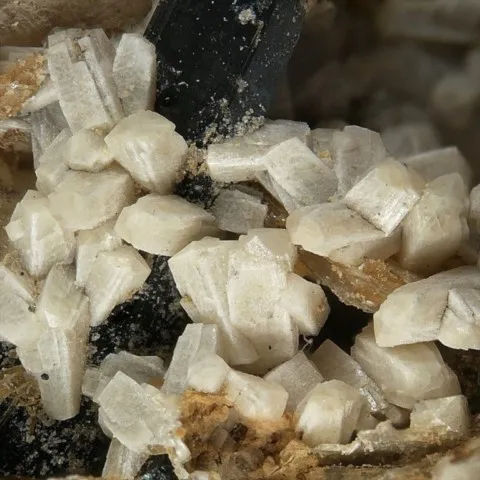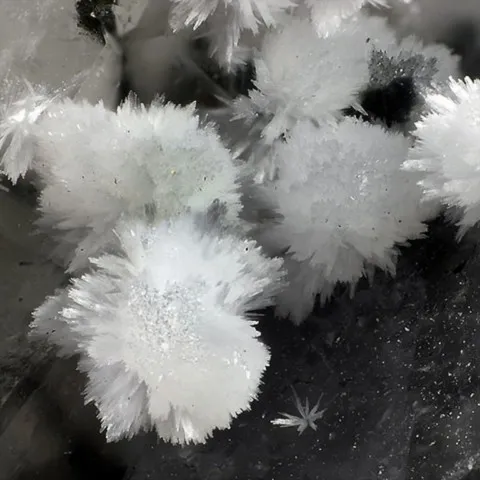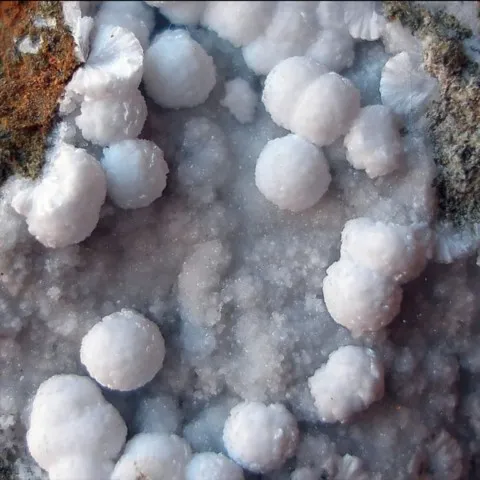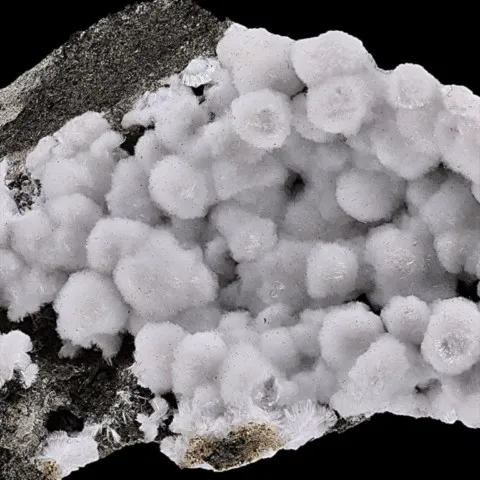GONNARDITE
Class : Silicates
Subclass : Tectosilicates
Crystal system : Tetragonal
Chemistry : Na2CaAl4Si6O20 7H2O
Rarity : Rare
Gonardite is a rare zeolite which is found in the cavities of basalts, leucite tephrites, and more rarely in syenitic pegmatites and skarns. It was named in honor of the French mineralogist Ferdinand Gonnard, Professor at the University of Lyon who described the mineral in 1871 under the name mesolite. The crystals are prismatic to fibrous, frequently grouped in spherolites not exceeding 3 cm in diameter. The association with thomsonite is frequent, it sometimes crystallizing epitaxially on gonnardite cores. Intergrowths of gonnardite on natrolite are also common. It is colorless, white, yellowish white or salmon pink.
Main photo : Gonnardite from La Chaux de Bergonne, Gignat, Puy-de-Dôme, France © Yves Masson
Gonnardite in the World
Twinning
No twin known for this mineral species.
Fakes and treatments
No fakes recorded for this mineral species.
Hardness : 4 to 5
Density : 2.25 to 2.36
Fracture : Irregular
Streak : White
TP : Translucent to transparent
RI : 1.514 to 1.520
Birefringence : 0.006
Optical character : Biaxial +
Pleochroism : None
Fluorescence : Sometimes blue
Solubility : -
Magnetism : NoneRadioactivity : None

